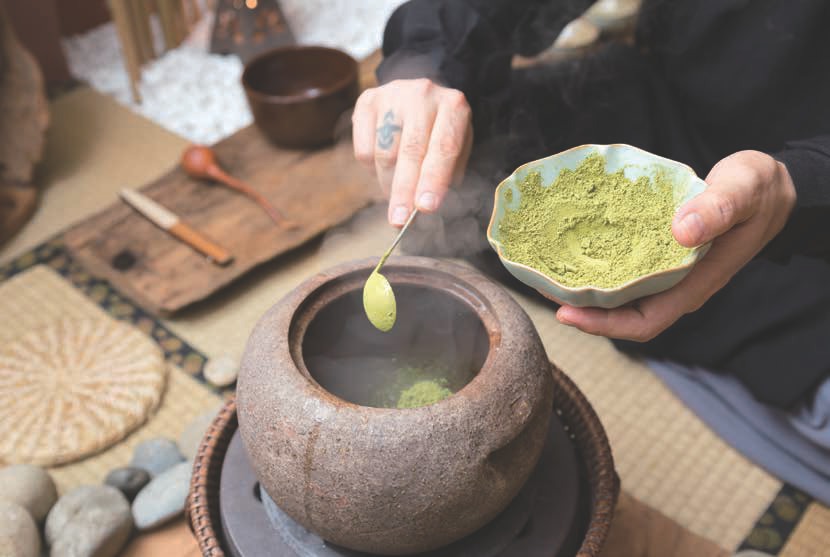
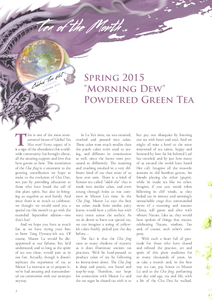 |
|
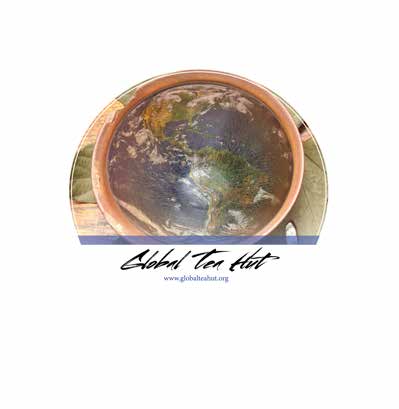
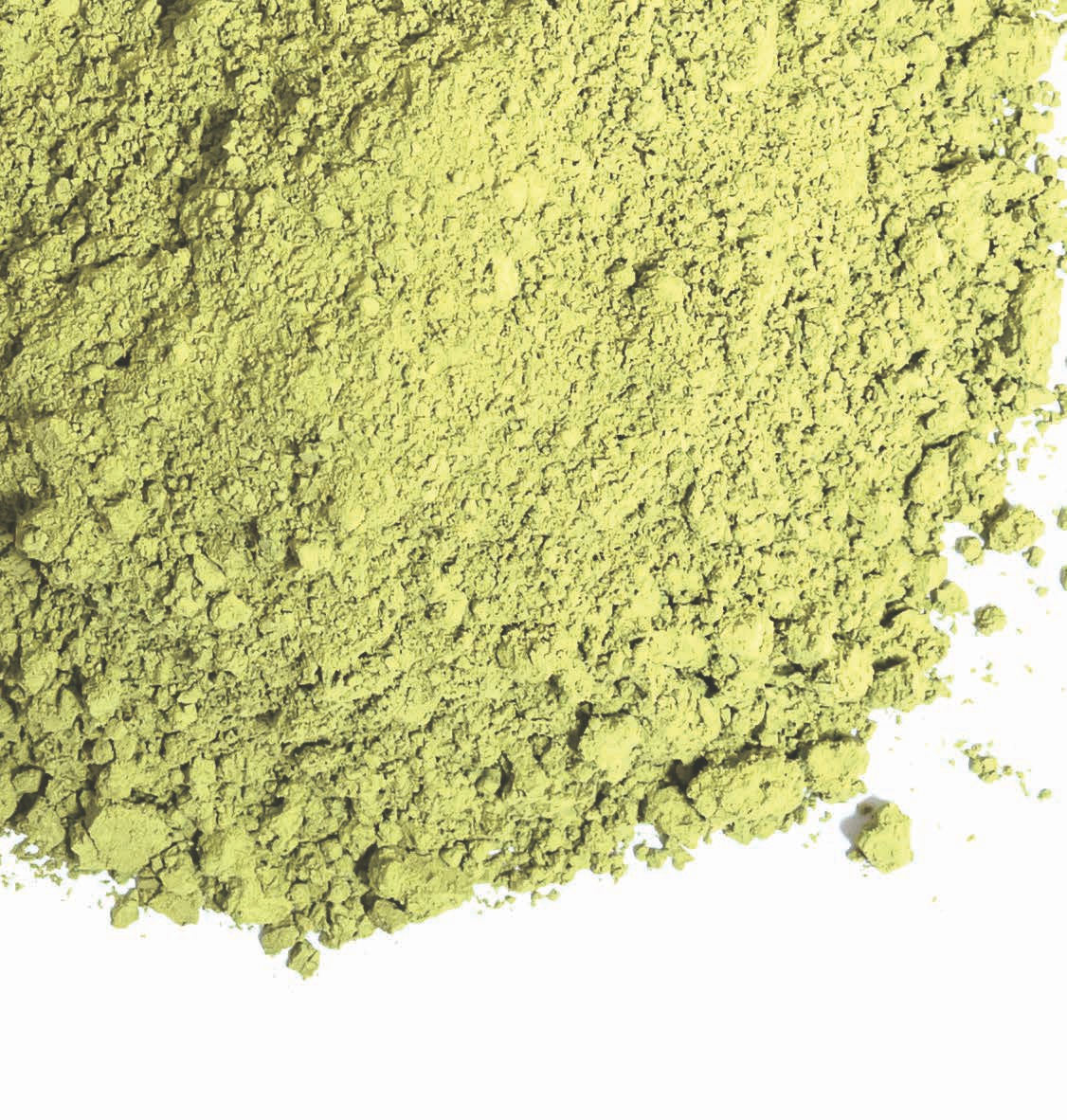
This is one of the most monumental issues of Global Tea Hut ever! Every aspect of it is a sign of the abundance this worldwide community has brought about, all the amazing support and love that have gotten us here. This translation of the Cha Jing is a testament to the growing contribution we hope to make to the evolution of Cha Dao, not just by providing education to those who have heard the call of this plant spirit, but also in bringing us together as soul family. And since there is so much to celebrate, we thought we would send you a special tea this month to go with the extended September edition - one that's fun!
And we hope you have as much fun as we have trying your best to brew Tang Dynasty-ish tea. Of course, Master Lu would be disappointed at our failures, but he'd understand, and so long as the spirit of tea was there, would join us in our fun. Actually, though it doesn't replicate the experience of tea as Master Lu instructs us to prepare it, we've had amazing and transcendental tea ceremonies with our attempts anyway.
In Lu Yu's time, tea was steamed, crushed and pressed into cakes. These cakes were much smaller than the puerh cakes we're used to seeing, and different in constitution as well, since the leaves were processed so differently. The steaming and crushing resulted in a very different kind of tea than most of us have ever seen. There is a kind of Korean tea called "ddok cha" that is made into similar cakes, and even strung through holes as was common in Master Lu's time. In the Cha Jing, Master Lu says the best tea cakes, made from tender, juicy leaves, would have a yellow hue with wavy crests across the surface. As we sit down to brew our special tea, we can imagine a string of yellowish cakes freshly picked just the day before...
The fact is that the Cha Jing casts as many shadows of mystery as it does illuminate ancient tea practices. We'd be hard-pressed to produce cakes of tea by following its instructions alone. The Cha Jing is deep and poetic, not literal and step-by-step. Therefore, our hope for connection with Master Lu and the tea sages he shared tea with is to but pay our obsequies by brewing our tea with heart and soul. And we might all raise a bowl to the most renowned of tea saints, happy and honored by how far his beloved Leaf has traveled, and by just how many of us around the world have heard Her call. Imagine all the moonlit sessions in old bamboo groves, his friends playing the zither (guqin), while he made tea like no other. Imagine, if you can, monk robes billowing in cliff winds, as they boiled tea in remote and seemingly unreachable crags that commanded views of a stunning and nascent China, still green and alive with vibrant Nature. Like us, they would have spoken of things that matter, celebrating Nature, wisdom, Tao and, of course, each other's company.
With such a heart full of gratitude for those who have shared and refined the practice, art and spirit of this plant medicine for so many thousands of years, let us take a month and, in the best way we can, pay honor to Master Lu and to the Cha Jing, perfuming our day and age, tea and life, with a bit of the Cha Dao he walked.
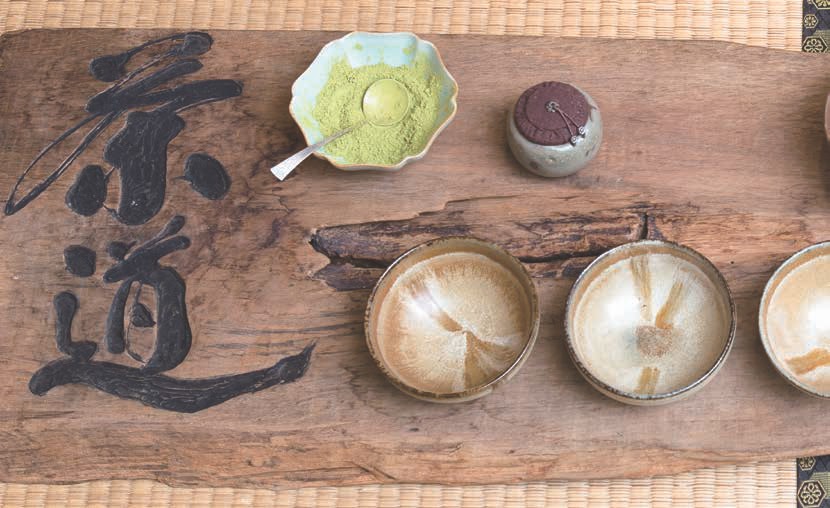


Here is what we used for our Tang Dynasty tea ceremony (Turn the page for a simpler version):
We think that if you prepare this powder with such an altar in your heart, you will find yourself uplifted by the tea - your prayers answered, as She recalls to you in much more vivid detail all of the things She remembers about Master Lu and his friends. And, of course, Her living account is more powerful than even the most famous book on tea could be!
Our tea of the month, Morning Dew, is a powder made from oolong varietals that were processed more like a green tea, mostly Four Seasons of Spring (si ji chun). The tea was all donated by Mr. Xie, who we are all already so grateful to. There are no words to express the love he has shared with this global community over the years. Along with our homage to Master Lu Yu, let us also raise a bowl of this magnificent tea to him! We asked Mr. Xie to include some Golden Lily (jing xuan) leaves into what was being ground in order to give it a slightly yellowish hue, helping to promote our reverie. In that way, at least the ground powder resembles the shade of what Master Lu said were the best quality tea cakes.
According to the Cha Jing, the cakes were roasted over a flame, maybe giving them a flavor akin to fine oolong, especially when they were well-roasted. Then, the tea was crushed and put into a paper envelope while it was still hot. After it cooled, it was then ground by hand into the amount of powder one intended to use in the session. We are just going to skip to the powder, using our imagination to roast the small cake with bamboo tongs over an open flame, crush it while it is soft and steaming and then seal it in an envelope hot...
Here's what you will need to brew some Tang Dynasty Lu Yu boiled tea. We have provided two versions: the more advanced, listed above, and a simple Tang Dynasty tea on the next page. More important than the teaware, however, is to have fun!

Once you have everything, you can start with some meditation while the water boils, listening for the sound of the wind soughing the pines. You may only want to fill the pot, pan or kama halfway to avoid splattering or boiling over. Pay close attention to the water, though, as we will want to find the stages or "boils" Lu Yu speaks of. When the water reaches bubbles the size of a fish's eyes, add a pinch of salt. You can taste the water with the ladle to make sure it isn't too salty, but be sure to discard the water you taste from. Then, when the water starts to make more noise and has "strings of pearls", ladle a bowl of water out into your hot water basin/bowl/ pitcher, saving it for later. When the water starts to churn, take your stirring stick and start to revolve the water vigorously. When the water starts turning in a whirlpool, add a spoonful or two of your tea of the month powder to the center of the vortex. If the tea doesn't mix thoroughly, you will have to stir it up with the stick again. Wait until the tea starts boiling and frothing, spluttering and jumping in green waves, and then you can add back the water you took out earlier and stored in the water basin. Finally, ladle the tea into three or five bowls to share...
Master Lu says in the Cha Jing that we can share five bowls amongst seven people or otherwise three. The tea will be very hot, so be careful, but you will want to drink it as quickly as possible so that the powder doesn't separate from the water. The tea should be light and clean, clear and bright with a beautiful energy. You can make it stronger if you want, as we have sent you enough powder for several sessions, but we hope you will try it light as Master Lu suggests. (We will have a video about making Tang tea as well!)
Have fun with this month's tea, sharing the experience with some people near and dear to you! Boiling light green tea on a summer day with friends is a pastime as old as dragons. Just a hint of nostalgia, swirling in bright green billows, is enough to feel transported, like a temple bell summoning us all to meditation. And after some meditation, as the water boils, lean in and look for visions of us all in there - boiling the same tea around the world. And then when you add the powder, drift back further in time to the sages that cloudwalked around ancient Chinese crags, cliffs, bamboo groves and forests seeking sacred springs and dear spots to alchemize this same libation. For the same spirit, of mountain and cloud, sings through our powder as then. Such sessions are healing beyond words. And nothing in life could be better, other than sharing them!

